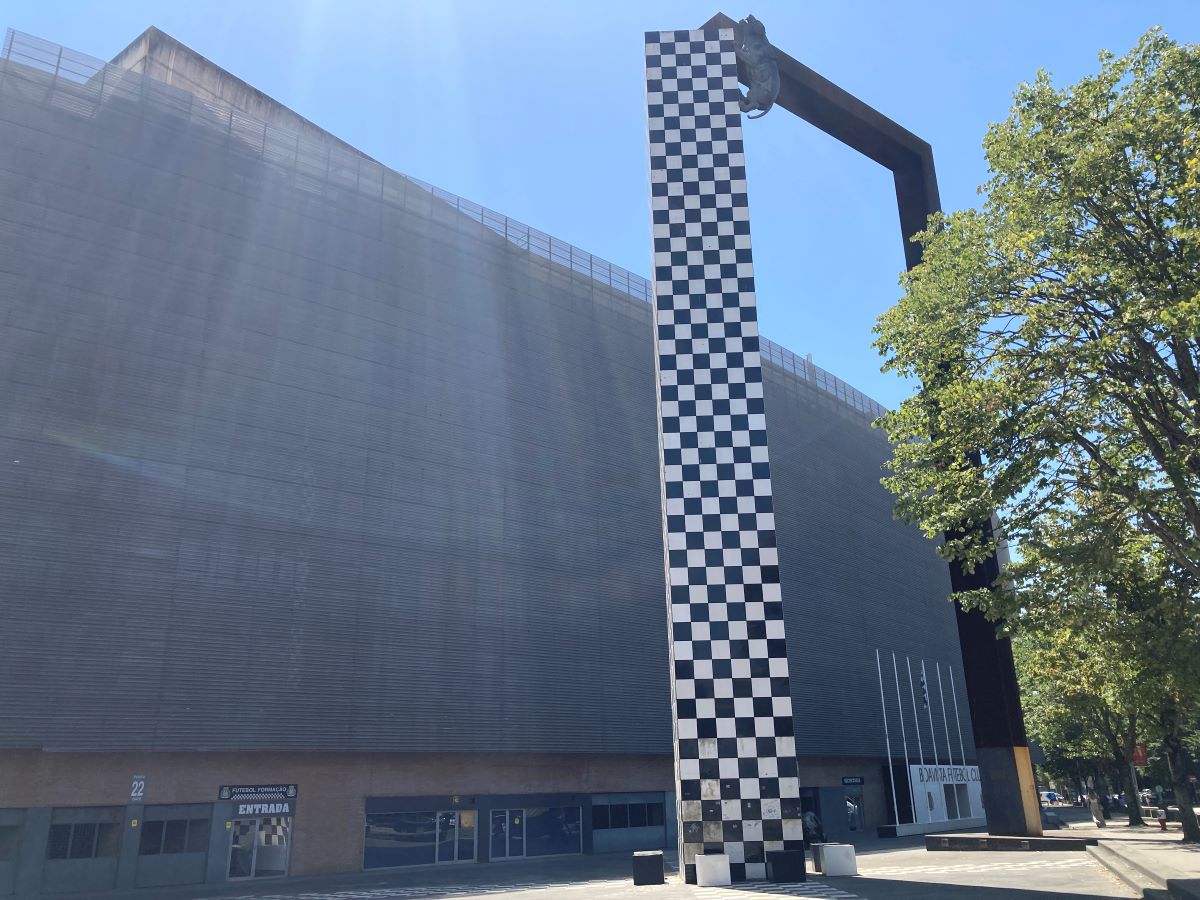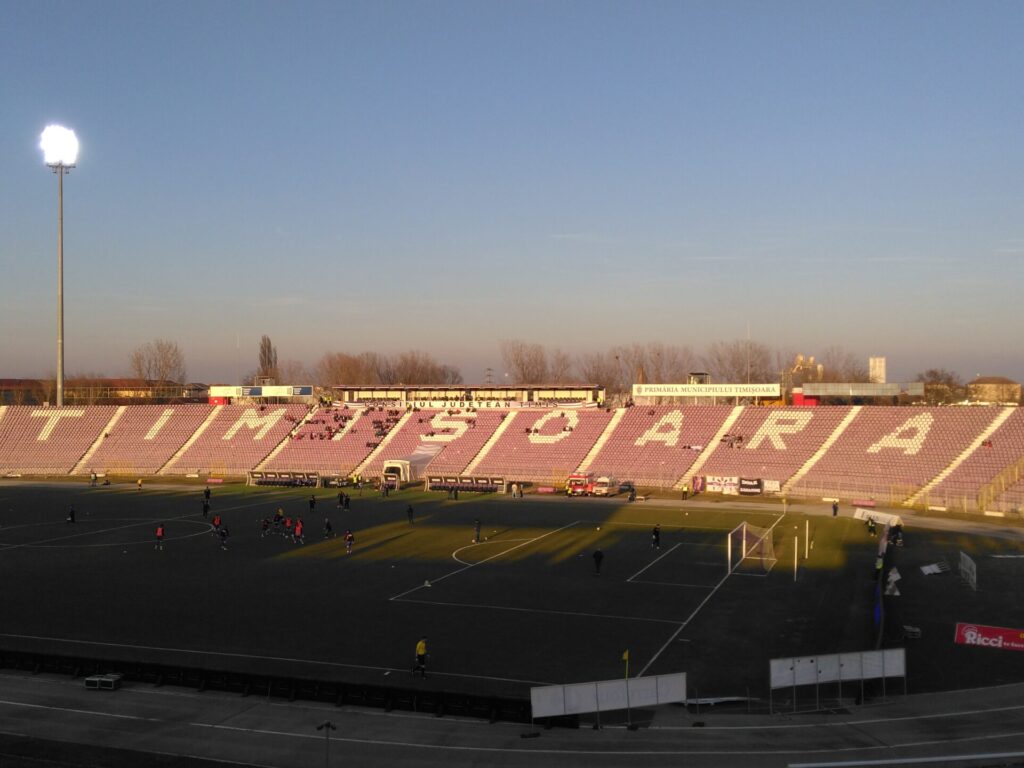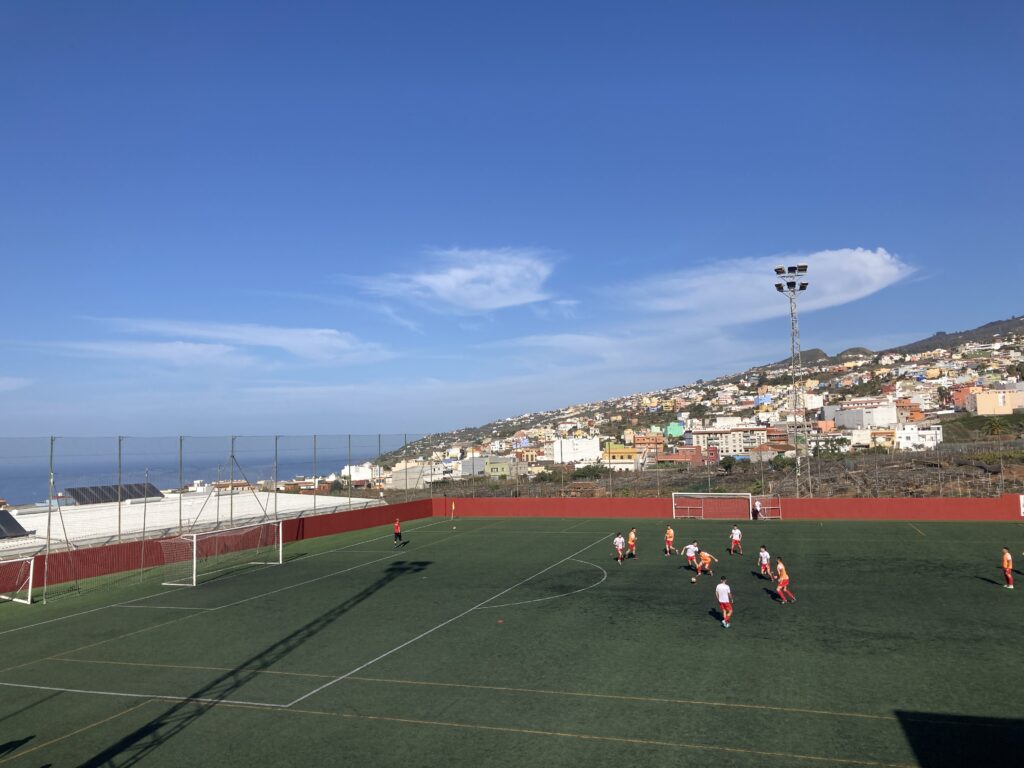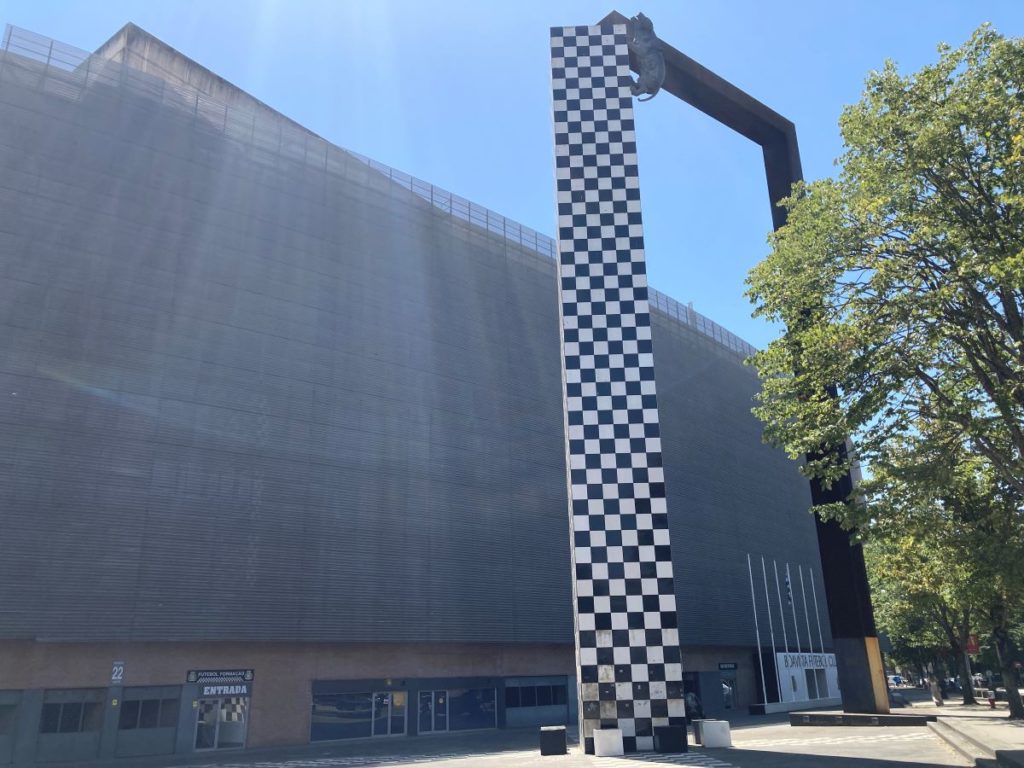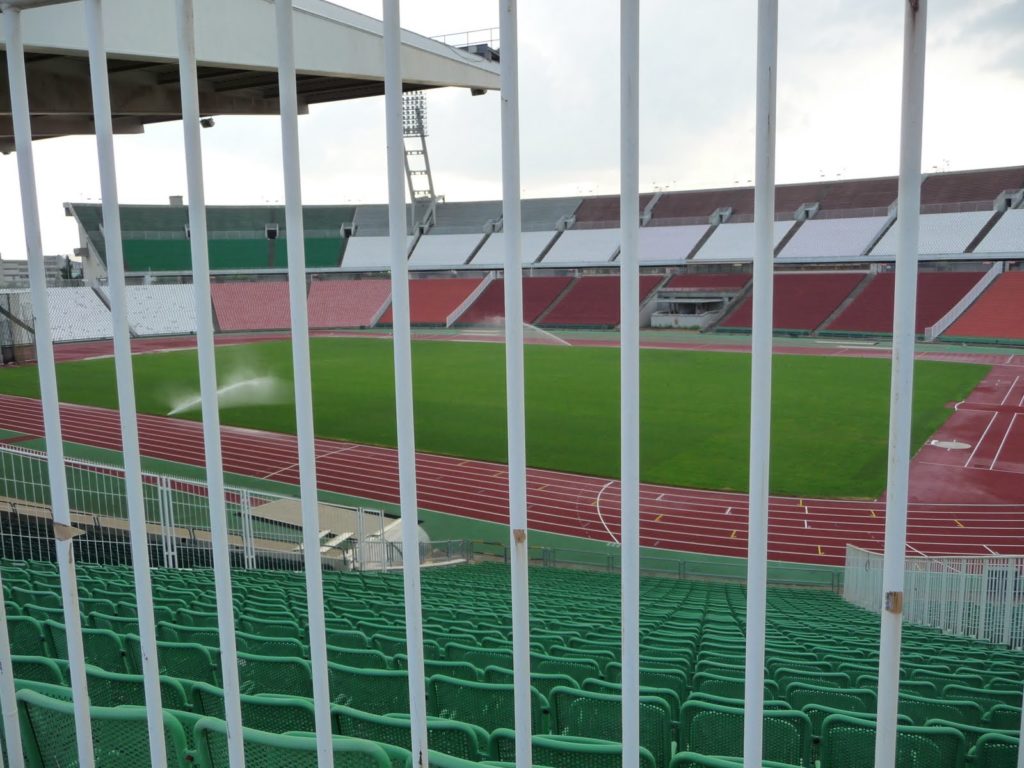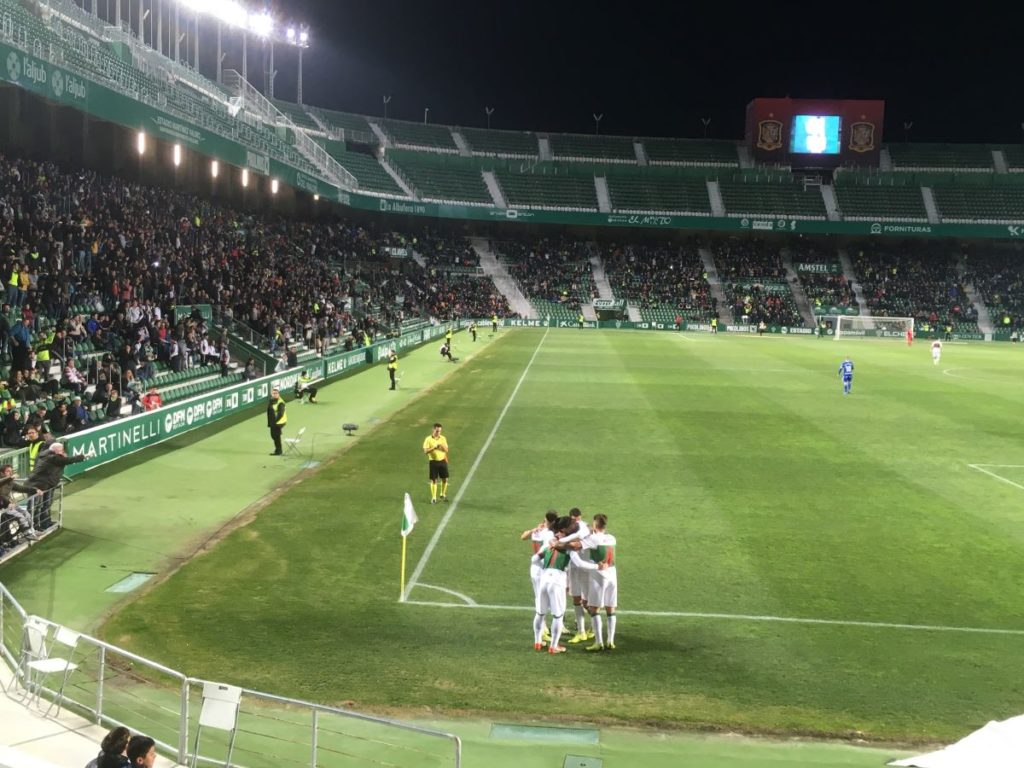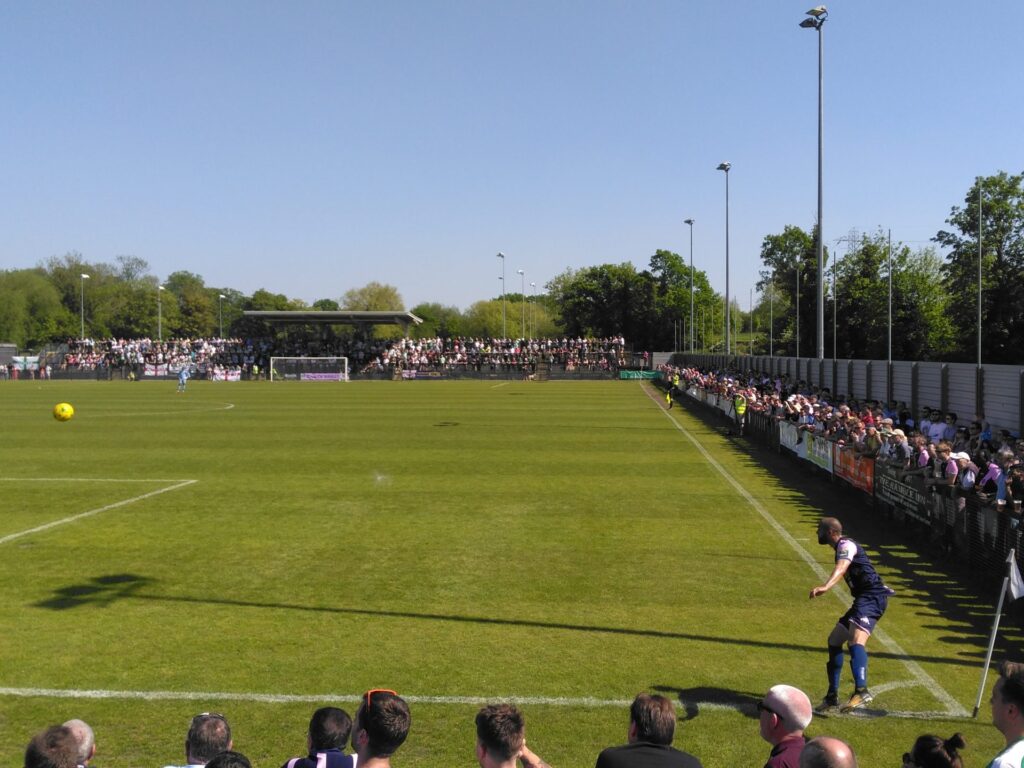Boavista
Boavista are one of only two teams to have broken the big three’s domination of the league championship in Portugal. Of course, their city rivals FC Porto are part of that big three.
The club was formed in 1903 by two English brothers living in Porto and it takes its name from an area in the western part of the city. As well as their feat of winning the league in 2001, Boavista are perhaps best known by English football fans for their unusual black-and-white chequerboard kit.
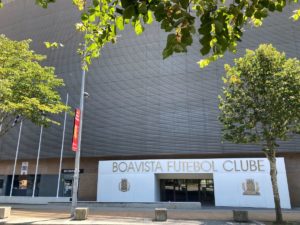
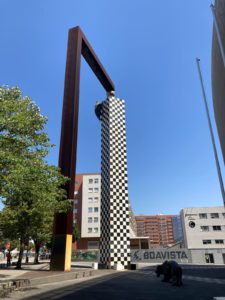
I couldn’t take any particularly exciting photos of Estádio do Bessa itself, but the huge arch outside the stadium’s main entrance is certainly an impressive sight – complete with climbing panther, in homage to the club’s nickname.
Leixões SC
Leixões are based in the Matosinhos area, north of central Porto but easy to reach on the metro. The team’s greatest achievement came in 1961 when they won the Portuguese cup, the Taça de Portugal, but they’ve only featured in the top flight for a few seasons in recent decades. Their last spell in the Primeira Liga ended in 2010 and they’ve been in the second tier ever since.
Estádio do Mar, Leixões’ home since 1964, has attracted unwanted headlines recently for the state of its pitch and other facilities. Major building work was in progress on the day I visited, with a new stand being erected behind one of the goals. Several locals were taking a interest in this, keeping an eye on proceedings from a nearby road overlooking the stadium.
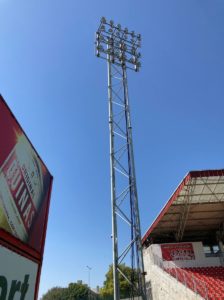
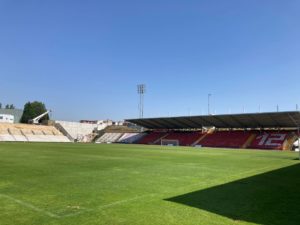
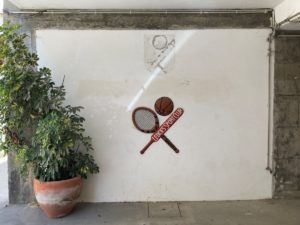
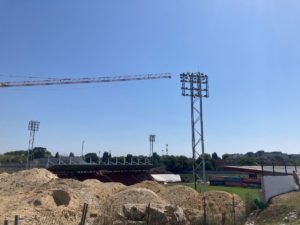
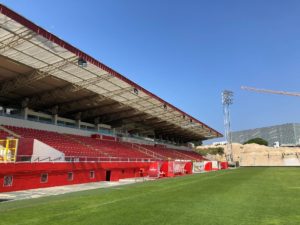
I wandered through an open gate and onto the grass near one of the corner flags to get some photos inside. Nobody seemed concerned by my presence, although I wasn’t brash enough to embark on a circuit of the pitch to get a better look at the building work.
Rio Ave
Back on the metro and heading further north out of Porto lies the town Vila do Conde, home of Rio Ave. Unlike Leixões, Rio Ave have never lifted silverware, but their ground has also attracted negative publicity for its state of repair. The uncovered stand opposite the dugouts was demolished in 2020 because of safety concerns, leaving the main stand as the only seats in the house with both ends at the stadium backed by grassy banks. With Estádio dos Arcos currently hosting top division football, it’s clearly not an ideal arrangement.
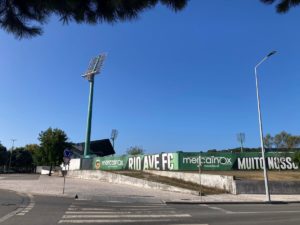
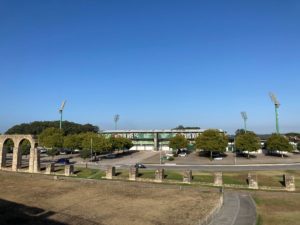
However, the football ground isn’t the only partially complete structure in the vicinity. The remains of an 18th-century aqueduct run past the stadium. In what could’ve been an alternative plot for the film Black Narcissus, the aqueduct was commissioned to supply water to a convent but the work proved problematic because of a slope in the route that wasn’t picked up on before building began. As a result, it took almost 90 years to finally erect the 999 arches that originally stood.
On the pitch, the closest that Rio Ave have come to glory years came in the mid-80s under the management of Félix Mourinho, father of José. The team reached two cup finals and finished fifth in the league, a position they have never bettered.
SC Braga
Although obviously a different city, Braga is easy to reach by train from Porto and it would be a shame not to share a photo or two of this stunning stadium. Built for Euro 2004, the defining feature of Estádio Municipal de Braga is the landscape that accommodates it. Behind one goal is a rock face carved out of the hillside, while the other end looks out towards the city.
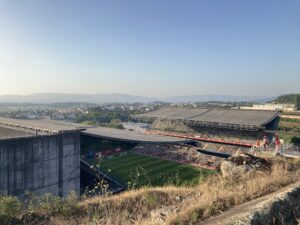
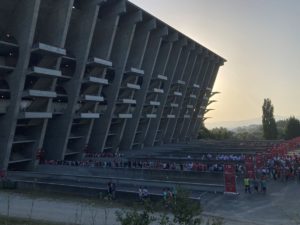
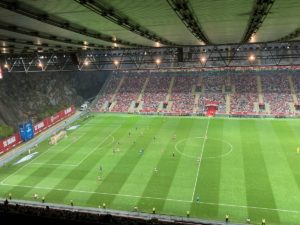
During my week in Portugal I picked up a ticket for Braga’s Champions League qualifying tie against Serbian side TSC Bačka Topola. Two goals in two minutes put the home side in control of the game during the first half, and they added a third late on.
You’ll notice that there aren’t any photos of the Estádio do Dragão. Although I considered booking a tour of FC Porto’s home ground, other holiday plans took priority and I didn’t get around to at least spotting the stadium. Still, that gives me a reason to come back.
